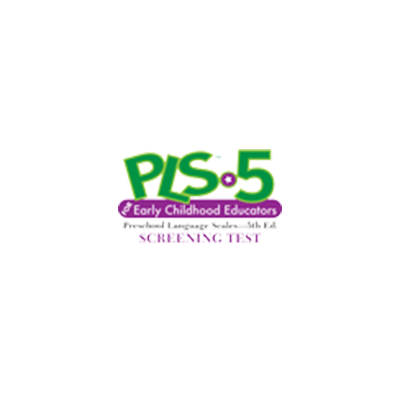Irla Lee Zimmerman, PhD, Violette G. Steiner, BS, Roberta Evatt Pond, MA
Overview:PLS™-5 Screening Test for Early Childhood Educators can be used to screen a broad spectrum of speech and language skills for children birth through age 6.
Age Range:Birth-6:11
Administration:Examiner interaction and verbal response to stimulus pictures
Scoring Option:Manual Scoring
RTI Tiers:RTI Level 1
Completion Time:5-10 minutes
Scores/Interpretation:Pass/fail scores—emerging interaction and language and speech skills in infants and toddlers; pass/fail scores for articulation, language, social/interpersonal communication skills, stuttering, and voice for children ages 3:0 to 6:11.
Publication Date:2015
The PLS-5 Screening Test for Early Childhood Educators is an efficient tool to help specialists from multiple disciplines identify infants, toddlers, and young children who are at-risk for a speech or language disorder. Adapted from the PLS-5 Screening Test used by speech-language pathologists (SLPs), this tool can help you screen for a broad spectrum of skills within six speech and language areas—in just 5 to 10 minutes.
Applications
- Conduct infant, preschool, or kindergarten language screenings of emerging developmental communication skills
- Identify children who need to be referred to an SLP for further speech or language assessment
Features & Benefits
- It’s designed especially for early childhood educators, with separate kits for age groups 0-3 and 3-6.
- PLS-5 is ideal for programs serving infants, toddlers, and preschoolers whose primary language is English.
- Newly-proposed Head Start performance standards for assessing dual language learners are addressed.
- This brief screening test is engaging for children, and easy to administer and score for the examiner.
- If an SLP uses PLS-5 as the follow-up diagnostic language measure, there’s no need to re-administer the test items from the screening—simply transfer the responses from the PLS-5 Screening Tests to the PLS-5 protocol.
- Stimulus pages, administration and scoring directions, and technical information are all included in one compact manual, simplifying administration.
- Record Forms are available in tear-off pads.
- No manipulatives are needed for children ages 3:0 to 6:11. For infants and toddlers, collect the materials you need from toys and objects that are easily found within the child’s environment (squeaky toys, infant toys such as rattles, baby bottle, cup).
Areas of Assessment
- Enables you to screen emerging interpersonal, communication, and feeding skills for children birth through 2:11
- Screen children ages 3 to 6:11 in six areas:
- Language
- Articulation
- Connected Speech
- Social/Interpersonal Communication Skills
- Stuttering
- Voice
Materials
Case Studies
- Case Study – CJ Age 1 year, 6 months
- Case Study – Jacy Age 1 year, 10 months
- Case Study – Emily Age 2 years, 6 months
- Case Study – Eduardo Age 3 years, 2 months
- Case Study – Azadeh Age Age 3 years, 6 months
- Case Study – Jenny Age 4 years, 5 months
- Case Study – Sergio Age 5 years, 10 months
- Case Study – Wei Age 5 years, 10 months
- Case Study – Lisa Age 6 years
Pre-recorded Webinars
-
Prime Time to Screen–PLS-5 & CELF-5 Screening Tests and Shaywitz DyslexiaScreen
Presenter: Adam Scheller, PhD

Back-to-school is an ideal time for screening! Obtain important information about how screening helps identify children and adolescents at-risk for a disorder, as well as screening benefits and limitations. Specifics about screening tools available for children from birth through age 21 such as age ranges, content, understanding screening results, and next steps will be presented.
Date: Aug 17, 2017
 PDF: Prime Time to Screen–PLS-5 & CELF-5 Screening Tests and Shaywitz DyslexiaScreen
PDF: Prime Time to Screen–PLS-5 & CELF-5 Screening Tests and Shaywitz DyslexiaScreen Video: Prime Time to Screen–PLS-5 & CELF-5 Screening Tests and Shaywitz DyslexiaScreen
Video: Prime Time to Screen–PLS-5 & CELF-5 Screening Tests and Shaywitz DyslexiaScreen







